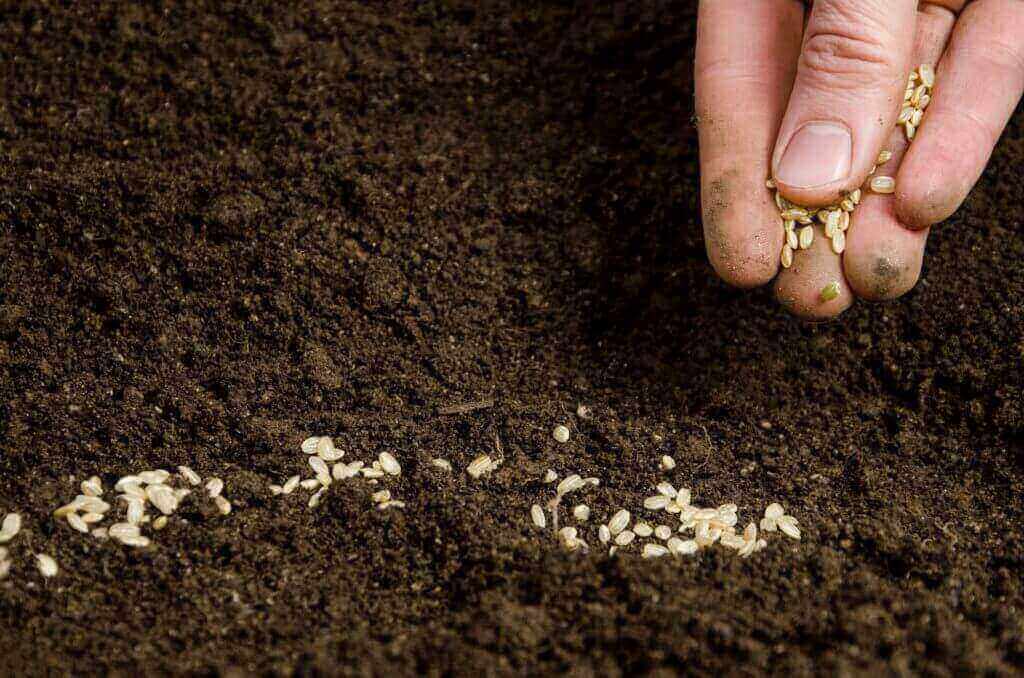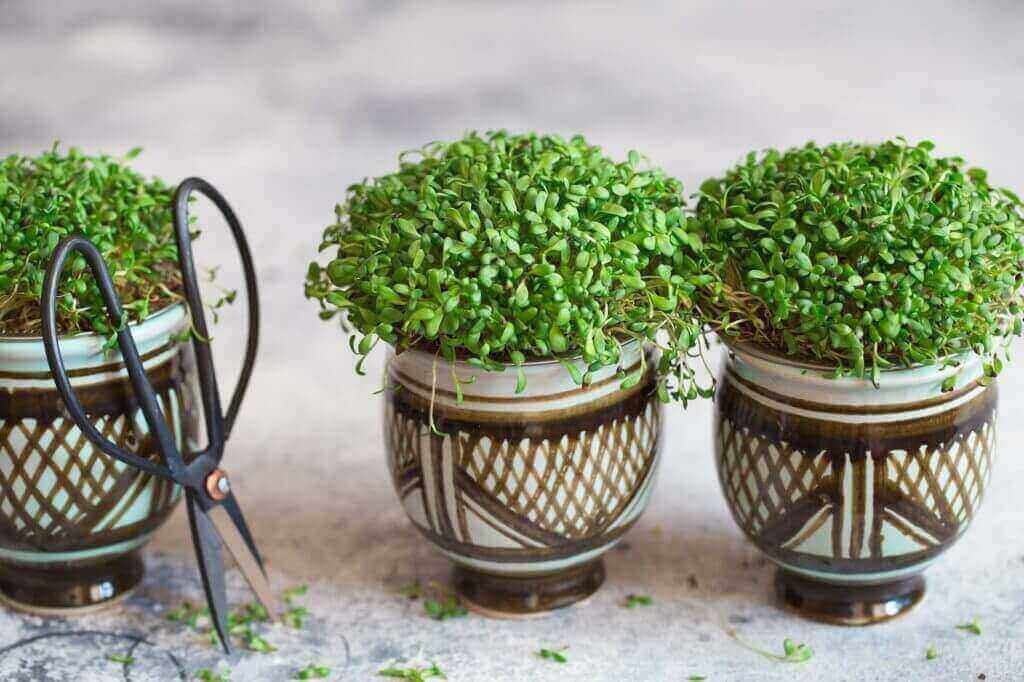👋 Click the mic button to talk to Alfred, the Todd's Seeds Gardening/Sprouting Expert – Feel free to ask him anything!
Ask Virtual Todd Anything - Click the Mic
Microgreens Guide – What Are Microgreens?
You could say that Microgreens are the tastiest and most nutritious stage of a plants life. We hope that people will find our site as one of the best microgreens guide available. These little seedlings often contain more vitamins, minerals and flavor than their fully-grown counterparts. Microgreens were once limited to garnishing gourmet dishes in high-end restaurants, but now they’ve turned in to a superfood category all of their own. Discover what seeds work best for microgreens and when to harvest them in our helpful microgreens guide.
The difference between microgreens and sprouts is that microgreens are planted in soil, and are left to grow for a little while longer. When the seedlings have developed their first leaves, these baby plants are known as microgreens. Though they´re small, they pack a punch when it comes to flavor and nutrition. These seedlings are crammed full of antioxidants, beta-carotene and essential vitamins and minerals making them much more than just a garnish. They can be easily added to meals, sandwiches, salads and smoothies for extra texture, nutrition and taste which is a good microgreens guide.
What Are The Health Benefits?
There isn´t much research into the direct health benefits of microgreens, but what is certain, is that they’re a fantastic source of natural vitamins and minerals. Adding the concentrated, fresh nutrition of microgreens sprouts to your diet will improve your overall health and boost your immune system. It’s no secret that a healthy, balanced diet can help defend against illnesses such as diabetes and heart disease.
Fresh microgreens sprouts are expensive to buy but the good news is that they’re very easy to grow at home. The start-up investment for an indoor sprout garden is pretty low and they don’t take up much space or a lot of your time. Growing your greens at home is a cost-effective and ecologically friendly way to add fresh vitamins and minerals to your diet. And just like with all homegrown food, you’re doing the planet a favor by reducing food miles and improving your carbon footprint. When you grow at home, you can also be certain that there are no pesticides or additives on your produce.
What Seeds Work Best For Microgreens?

Though you can germinate any type of seed into a shoot, vegetables, herbs and flowers work best for growing microgreens. If you’re a first-time micro gardener then you don’t want to do too much too soon. Start simple with just one, easy to grow, sturdy strain such as Radish. Once you’re familiar with growing, you can start trying out other strains or even use a microgreen mix. The seeds that work best for microgreens are ones that germinate quickly.
Ideally, as a microgreens guide, you should choose seeds that are specifically recommended for microgreen growing. Choose seeds with a high germination rate and avoid ones with a rate below 85%. For best results, always use raw seeds and not ones that have been roasted, cooked or treated in any way. When it comes to seeds, purer is better. Always buy organic, non-GMO, and none treated seeds from a trusted supplier. It’s common for non-organic seeds to be treated with unpleasant substances such as bleach. You can’t produce organic plants from non-organic seeds!
One of the most important things to consider when choosing seeds for growing greens is your personal taste and nutritional requirements. The taste of microgreens is intense and can add an extra dimension to many meals. If you want to know what a certain seed will taste like then think of the adult plant and intensify the flavor. If you like a warm peppery taste then grow radish seeds or for a softer, sweeter taste, plant pakchoi. Different seeds have different nutritional values too so you may want to choose your seeds depending on their nutritional content.
When Do I Harvest Microgreens?
Your nourishing, tasty greens should be ready to harvest between 14 and 21 days after planting, depending on the species. Some seeds such as lettuce are quicker to shoot up than beetroot for example. You can use the height as a guide for harvesting. The perfect time to harvest your seedlings is when they are between 1.5 and 2.5 inches tall. At this time they have just started to develop their first “true leaves”. This will be the second set of leaves that appear, the first ones are the cotyledons, which aren’t really leaves. The true leaves will be a different shape to the first leaves that appear.
You can also harvest your seedlings according to your personal taste. As a microgreens guide, when it’s close to harvest time try picking a little sample from your tray. Make a note each day of how the taste and texture are different. You can then use your notes as a guide for when to harvest your plants for preferential taste.

When it comes to harvesting your crop then you need to use a pair of clean and sharp scissors. It’s worth investing in a pair that you can keep aside especially for harvesting your baby greens. Use the scissors to cut your greens just above the soil line. Many seed strains will regrow several times, however, the second growth is usually a bit slower and the taste will be slightly different. To encourage regrowth then it’s recommended that you leave a long stem when harvesting.
It´s better to eat your greens fresh and raw directly after you’ve harvested them. If you have excess, they need to be dried off and stored in the fridge in a plastic bag or container. If they’re stored correctly then they can last up to three weeks in the refrigerator. Once you’ve grown all that you can from your tray, you can empty the soil into a compost bin. If you don’t have a compost bin then empty the soil out on the earth for small creatures to enjoy.
Conclusion:
Growing and eating microgreens is not only great for your health, its pleasant on your taste buds. They are also good for the environment. As you can see from this microgreens guide, it’s very easy to become a grower. For very little investment and effort, you can have an abundance of fresh and nutritious homegrown greens.
For Your best microgreen seeds, visit Todd’s Seeds Seed Store.
You can also watch the video version of this article and if you like what you see head on over to YouTube and subscribe to our channel for more gardening and sprouting videos. Hopefully you’ll find this microgreens guide helpful.